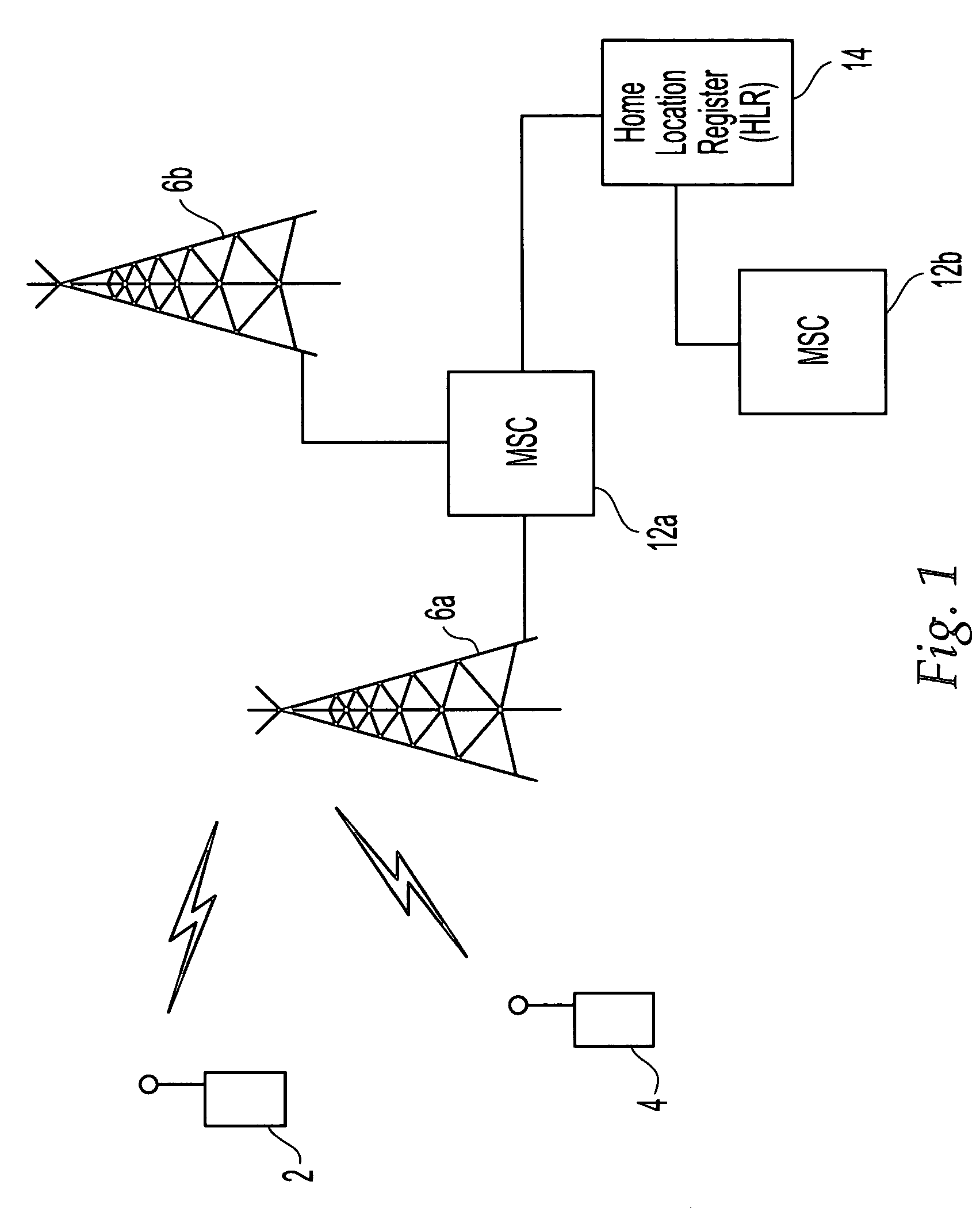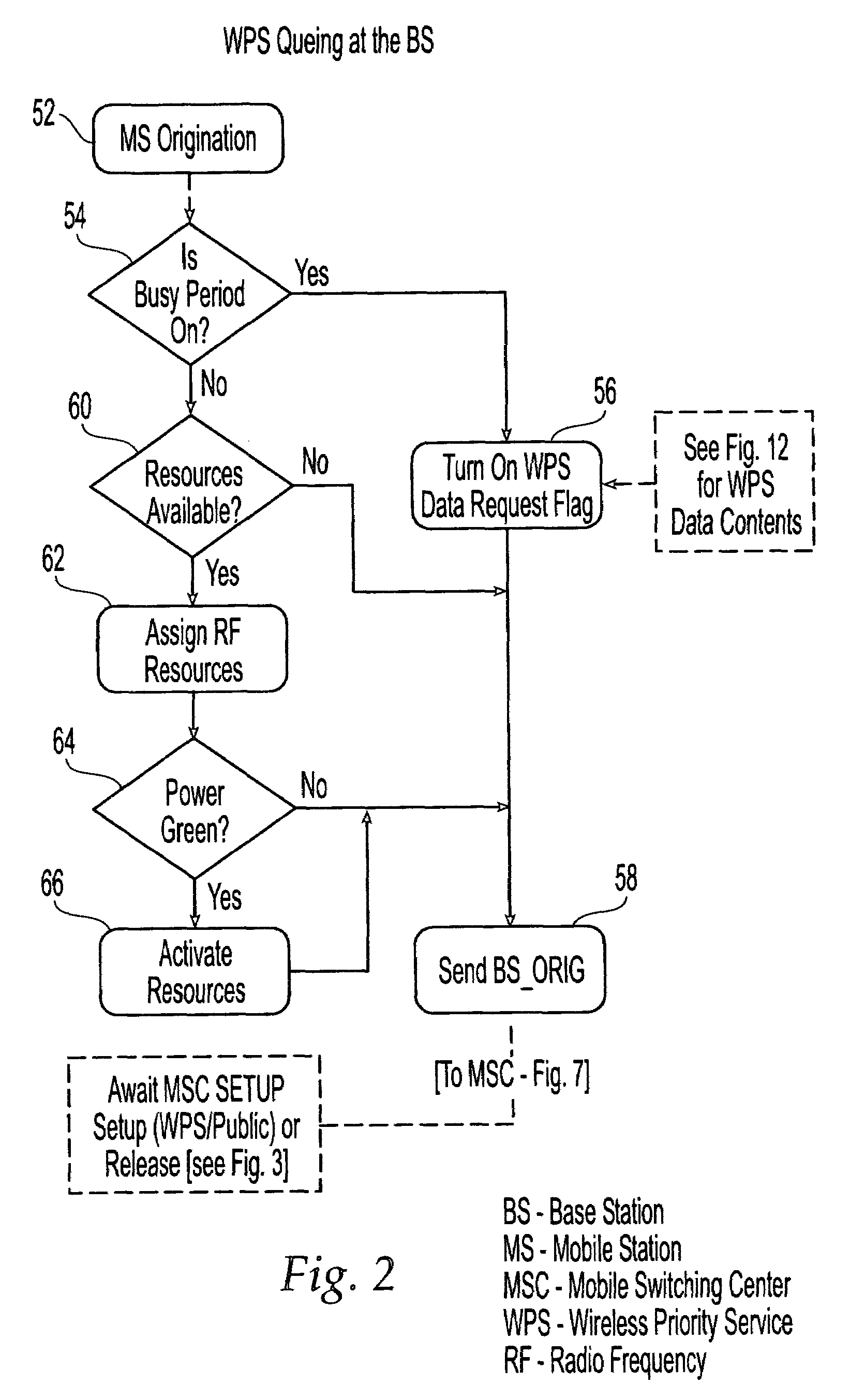Radio channel allocation for national security and emergency preparedness calls
a radio channel and emergency preparedness technology, applied in the field of wireless telephone networks, can solve problems such as unreasonable level of service denial for public users
- Summary
- Abstract
- Description
- Claims
- Application Information
AI Technical Summary
Benefits of technology
Problems solved by technology
Method used
Image
Examples
Embodiment Construction
[0013]FIG. 1 illustrates the basic components of a wireless telephone network in accordance with the present invention. Mobile devices 2 are cell phones or other devices (such as PDAs) originating WPS calls. Mobile devices 4 are cell phones or other devices that originate low priority, public calls. The same mobile device may originate either high priority or low priority calls. BS's 6 receive calls from the mobile devices in the radio access network, such as mobile devices 2 and mobile devices 4. The BS's 6 are connected to MSCs 12, which in turn are connected to a Home Location Register (HLR) 14. The HLR 14 is capable of accessing subscriber profiles, which it does upon request from an MSC 12. There may be one or more MSCs 12 connected to an HLR 14, and MSCs 12A and 12B may be connected to different HLRs.
[0014]As described in further detail below, a BS 6 receives a call origination message from a mobile device 2 or 4, and, in turn, sends a BS_ORIG message to MSC 12, describing the...
PUM
 Login to View More
Login to View More Abstract
Description
Claims
Application Information
 Login to View More
Login to View More - R&D
- Intellectual Property
- Life Sciences
- Materials
- Tech Scout
- Unparalleled Data Quality
- Higher Quality Content
- 60% Fewer Hallucinations
Browse by: Latest US Patents, China's latest patents, Technical Efficacy Thesaurus, Application Domain, Technology Topic, Popular Technical Reports.
© 2025 PatSnap. All rights reserved.Legal|Privacy policy|Modern Slavery Act Transparency Statement|Sitemap|About US| Contact US: help@patsnap.com



